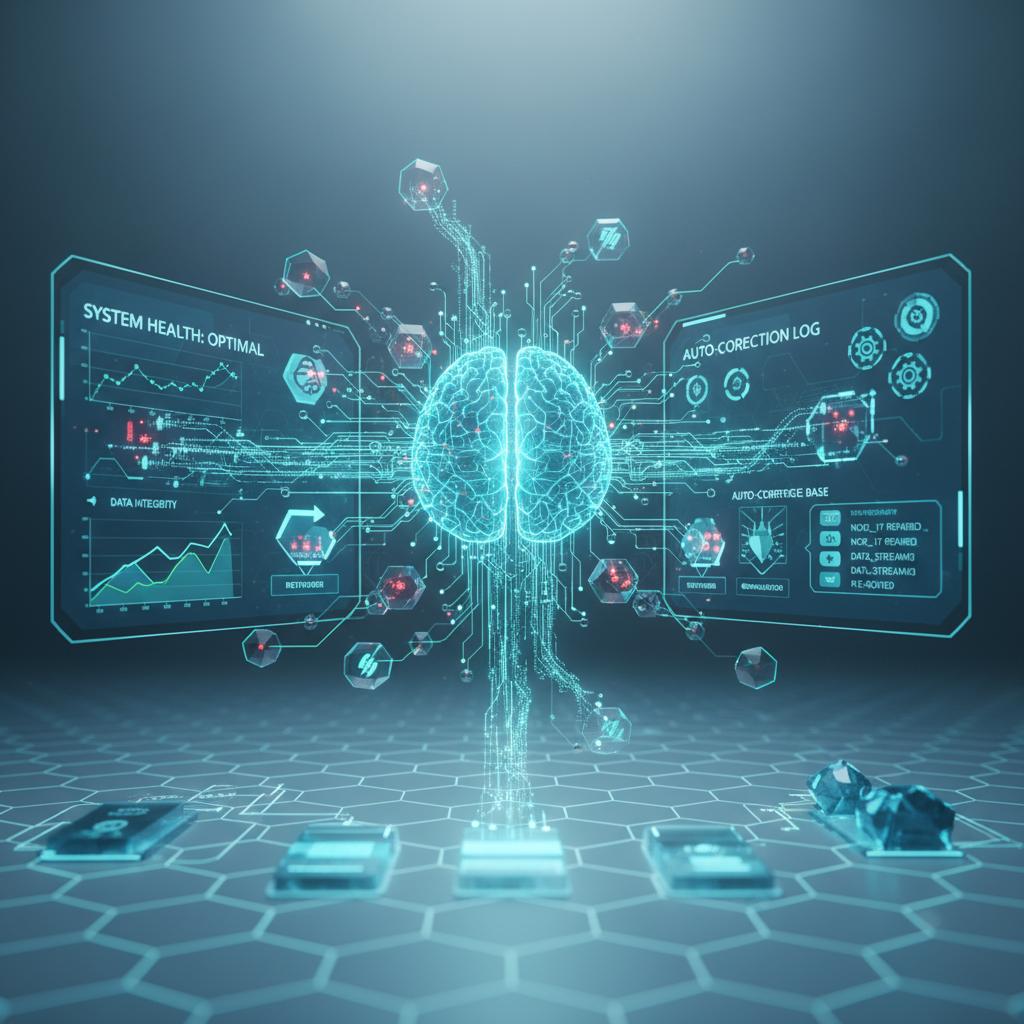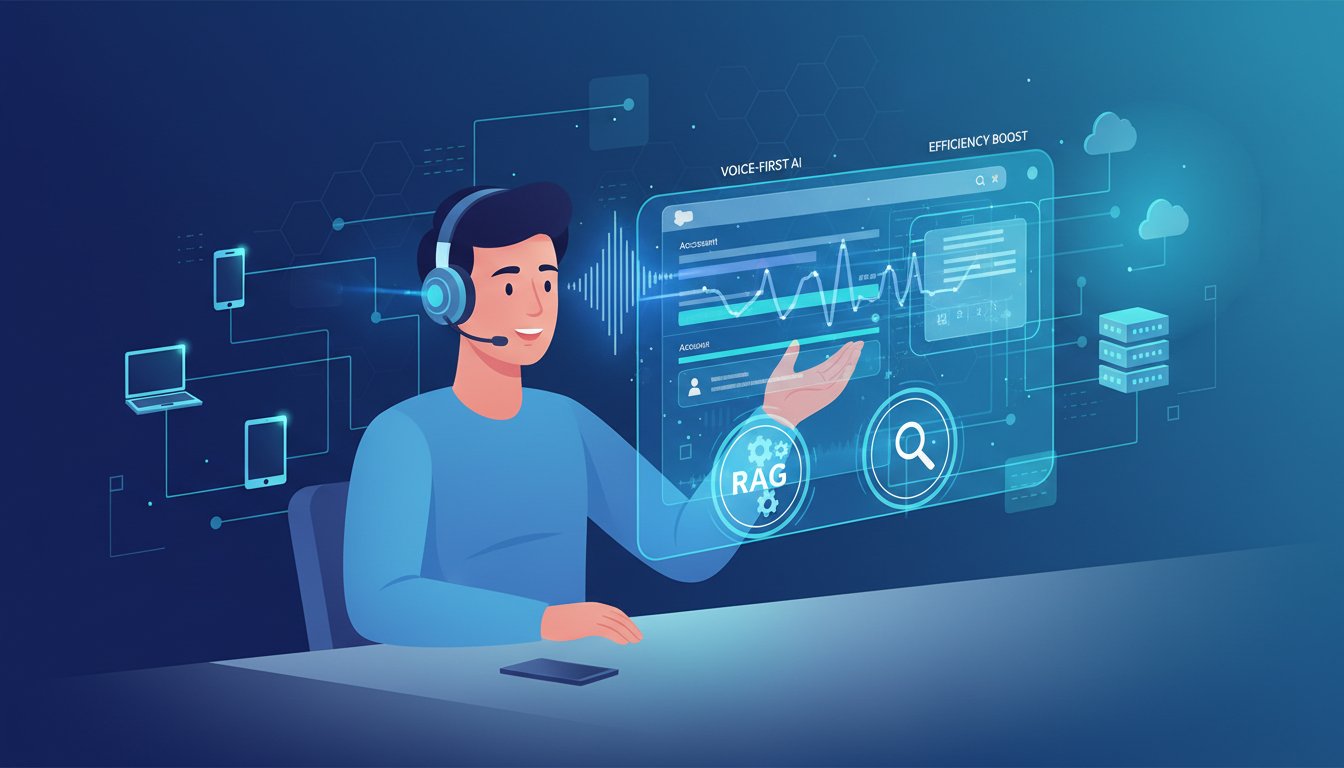Enterprise AI systems fail in predictable ways. Your RAG system retrieves irrelevant documents, generates hallucinated responses, or completely misunderstands user queries. Traditional approaches require manual monitoring and constant human intervention to catch these failures.
But what if your RAG system could detect its own mistakes and automatically correct them?
Self-healing RAG systems represent the next evolution in enterprise AI reliability. These systems continuously monitor their own performance, detect anomalies in real-time, and automatically trigger recovery mechanisms without human intervention. They combine intelligent error detection with adaptive correction strategies to maintain consistent performance even when underlying data or user patterns change.
In this comprehensive guide, you’ll learn how to architect, implement, and deploy production-ready self-healing RAG systems that can recover from common failure modes automatically. We’ll cover everything from basic error detection patterns to advanced adaptive learning mechanisms that improve system resilience over time.
Understanding Self-Healing RAG Architecture
Self-healing RAG systems operate on three fundamental principles: continuous monitoring, intelligent detection, and automatic recovery. Unlike traditional RAG implementations that rely on static configurations and manual oversight, self-healing systems actively observe their own behavior and adapt to changing conditions.
The architecture consists of five core components working in harmony. The monitoring layer continuously tracks system metrics, response quality indicators, and user feedback signals. The detection engine analyzes these signals using statistical models and machine learning algorithms to identify anomalies and potential failures. The decision engine determines the appropriate recovery strategy based on the type and severity of detected issues.
The recovery mechanisms themselves range from simple parameter adjustments to complete pipeline reconfiguration. Finally, the learning component captures insights from each recovery event to improve future detection and response capabilities.
Core Monitoring Metrics for Self-Healing Systems
Effective self-healing begins with comprehensive monitoring. Your system needs to track both technical performance metrics and semantic quality indicators to detect problems before they impact users.
Response latency and retrieval accuracy form the foundation of technical monitoring. Track the time between query submission and final response, along with the relevance scores of retrieved documents. Sudden spikes in latency or drops in retrieval confidence scores often indicate underlying system stress or data quality issues.
Semantic monitoring requires more sophisticated approaches. Implement embedding-based similarity checks between user queries and retrieved documents to detect semantic drift. Monitor the consistency of responses to similar queries over time, as inconsistency often signals retrieval instability or knowledge base corruption.
User engagement patterns provide crucial behavioral signals. Track metrics like conversation abandonment rates, clarification request frequency, and explicit user feedback to identify when your system fails to meet user needs. These behavioral indicators often surface problems that technical metrics miss.
Implementing Intelligent Error Detection
Error detection in self-healing RAG systems goes beyond simple threshold monitoring. You need sophisticated detection mechanisms that can identify subtle patterns indicating system degradation or failure.
Statistical Anomaly Detection
Implement statistical process control methods to detect when system behavior deviates from normal patterns. Use control charts to monitor key metrics like retrieval confidence scores, response generation time, and semantic similarity between queries and responses.
Calculate rolling baselines for each metric over appropriate time windows. For retrieval confidence, a 24-hour rolling average works well for most enterprise applications. Set control limits at two standard deviations from the mean to balance sensitivity with false positive rates.
When metrics fall outside control limits, trigger graduated response protocols. Single datapoint violations might warrant increased monitoring, while sustained deviations or multiple simultaneous violations indicate serious issues requiring immediate intervention.
Semantic Consistency Monitoring
Develop semantic monitoring systems that track the consistency and quality of your RAG system’s understanding over time. This involves comparing the semantic embeddings of user queries with retrieved documents and generated responses.
Implement cross-query consistency checks by maintaining a cache of recent query-response pairs. When processing new queries, check for semantic similarity with cached queries and compare response consistency. Significant deviations in responses to semantically similar queries indicate potential retrieval or generation problems.
Use embedding drift detection to monitor whether your system’s understanding of concepts changes over time. Calculate the centroid of embeddings for key concepts in your domain and track how these centroids shift. Sudden movements often indicate data corruption, model degradation, or changes in underlying content that require attention.
Multi-Signal Fusion for Robust Detection
Combine multiple detection signals using ensemble methods to improve accuracy and reduce false positives. Individual metrics might fluctuate due to normal variation, but correlated changes across multiple signals indicate genuine problems.
Implement a scoring system that weights different detection signals based on their reliability and relevance to specific failure modes. Retrieval confidence scores might be weighted heavily for document relevance issues, while user engagement metrics carry more weight for response quality problems.
Use time-series analysis to identify leading indicators of system degradation. Often, subtle changes in retrieval patterns precede more obvious response quality issues by several hours or days. Early detection enables proactive intervention before users experience problems.
Designing Automatic Recovery Mechanisms
Once your system detects problems, it needs sophisticated recovery mechanisms that can address different types of failures automatically. Effective recovery strategies must be fast, reliable, and minimize disruption to ongoing operations.
Adaptive Retrieval Recovery
When retrieval quality degrades, implement dynamic parameter adjustment mechanisms that can optimize search performance in real-time. This includes adjusting similarity thresholds, modifying query expansion strategies, and rebalancing retrieval across different data sources.
Develop fallback retrieval strategies that activate when primary retrieval methods fail. If semantic search returns low-confidence results, automatically fall back to keyword-based search or broader similarity thresholds. Implement query reformulation techniques that rephrase user queries using different terminology or structure when initial searches fail.
For persistent retrieval issues, trigger automatic index rebuilding or data refresh processes. Monitor the success rate of these recovery actions and escalate to human intervention when automatic recovery attempts repeatedly fail.
Response Generation Recovery
Implement multiple response generation strategies that can be dynamically selected based on current system performance and context requirements. When your primary generation model produces low-quality responses, automatically switch to alternative approaches.
Develop response validation mechanisms that check generated content for hallucinations, factual accuracy, and relevance before presenting to users. Use multiple validation techniques including fact-checking against retrieved documents, consistency checking with previous responses, and confidence scoring based on generation model internals.
When validation fails, implement progressive fallback strategies. First, attempt regeneration with modified parameters or prompts. If that fails, fall back to template-based responses or direct quotations from retrieved documents. For critical applications, implement human escalation when all automatic recovery attempts fail.
Data Quality Recovery
Monitor your knowledge base for data quality issues and implement automatic correction mechanisms. This includes detecting and fixing broken links, identifying outdated information, and resolving inconsistencies between related documents.
Implement automatic data refresh pipelines that can selectively update specific portions of your knowledge base when quality issues are detected. Use incremental indexing to minimize disruption while ensuring that corrected information becomes immediately available for retrieval.
Develop conflict resolution mechanisms that automatically handle contradictory information in your knowledge base. When multiple documents provide conflicting information about the same topic, implement automated ranking based on recency, authority, and source reliability.
Advanced Learning and Adaptation
The most sophisticated self-healing RAG systems continuously learn from their recovery actions and adapt their behavior to prevent similar issues in the future.
Feedback Loop Integration
Establish comprehensive feedback loops that capture information from every recovery event. Record the specific conditions that triggered each recovery action, the chosen recovery strategy, and the outcome of the intervention.
Analyze this recovery data to identify patterns and optimize future responses. If certain types of queries consistently trigger specific recovery mechanisms, proactively adjust system parameters to prevent these issues from occurring.
Implement user feedback integration that allows the system to learn from explicit and implicit user signals. Track which recovered responses receive positive user engagement and use this information to refine recovery strategies.
Predictive Failure Prevention
Develop predictive models that can anticipate system failures before they occur. Use historical performance data and current system state to predict when degradation is likely to happen.
Implement proactive adjustment mechanisms that modify system behavior based on predicted conditions. If your models predict retrieval quality degradation during high-traffic periods, automatically adjust search parameters or activate additional resources before problems occur.
Use external signals like content update schedules, user behavior patterns, and system load forecasts to anticipate when your RAG system might need additional support or different configuration settings.
Continuous Optimization
Implement automated A/B testing frameworks that continuously experiment with different system configurations and recovery strategies. This enables ongoing optimization without requiring manual intervention.
Develop performance benchmarking systems that regularly evaluate your RAG system against established baselines and industry standards. Use these benchmarks to identify areas for improvement and validate the effectiveness of recovery mechanisms.
Create automated reporting systems that provide regular insights into system health, recovery effectiveness, and areas requiring attention. These reports should be actionable and highlight both successes and opportunities for improvement.
Production Implementation Best Practices
Deploying self-healing RAG systems in production environments requires careful consideration of reliability, scalability, and operational requirements.
Gradual Deployment Strategies
Implement self-healing capabilities gradually, starting with non-critical recovery mechanisms and progressively adding more sophisticated features. Begin with simple threshold-based monitoring and basic fallback strategies before implementing complex adaptive systems.
Use canary deployment approaches that apply self-healing mechanisms to small portions of your traffic initially. Monitor the effectiveness and stability of these systems before expanding to full production deployment.
Develop comprehensive rollback procedures that can quickly disable self-healing mechanisms if they cause unexpected problems. Include circuit breakers that automatically disable specific recovery features when they trigger too frequently or cause system instability.
Monitoring and Observability
Establish comprehensive observability for your self-healing systems themselves. Monitor the performance and reliability of your monitoring, detection, and recovery mechanisms to ensure they operate correctly.
Implement detailed logging and tracing for all recovery actions. Include sufficient context to understand why specific recovery mechanisms triggered and whether they successfully resolved the underlying issues.
Develop alerting systems that notify operators when self-healing mechanisms activate frequently or fail to resolve detected problems. Balance automation with human oversight to ensure critical issues receive appropriate attention.
Performance and Resource Management
Design self-healing mechanisms to minimize their impact on system performance. Monitoring and detection processes should use minimal computational resources and avoid interfering with primary RAG operations.
Implement resource isolation between your primary RAG system and self-healing components. Use separate compute resources or containers to ensure that monitoring and recovery processes don’t compete with user-facing operations.
Develop capacity planning approaches that account for the additional resource requirements of self-healing systems. Include monitoring overhead, recovery mechanism resource usage, and potential traffic spikes during recovery events.
Self-healing RAG systems represent a fundamental shift from reactive maintenance to proactive system management. By implementing comprehensive monitoring, intelligent detection, and automatic recovery mechanisms, you can build RAG systems that maintain consistent performance even in the face of changing conditions and unexpected failures.
The key to success lies in starting simple and gradually building sophistication over time. Begin with basic monitoring and threshold-based recovery, then progressively add more advanced capabilities as your understanding of system behavior improves.
Remember that self-healing systems are not set-and-forget solutions. They require ongoing attention, optimization, and refinement to remain effective. Regular evaluation of recovery effectiveness, continuous improvement of detection algorithms, and adaptation to changing requirements ensure your self-healing RAG system continues to provide value over time.
Ready to build more resilient AI systems? Start by implementing basic monitoring for your current RAG deployment and gradually layer on self-healing capabilities. The investment in reliability and automation will pay dividends as your system scales and handles increasingly complex enterprise workloads.




